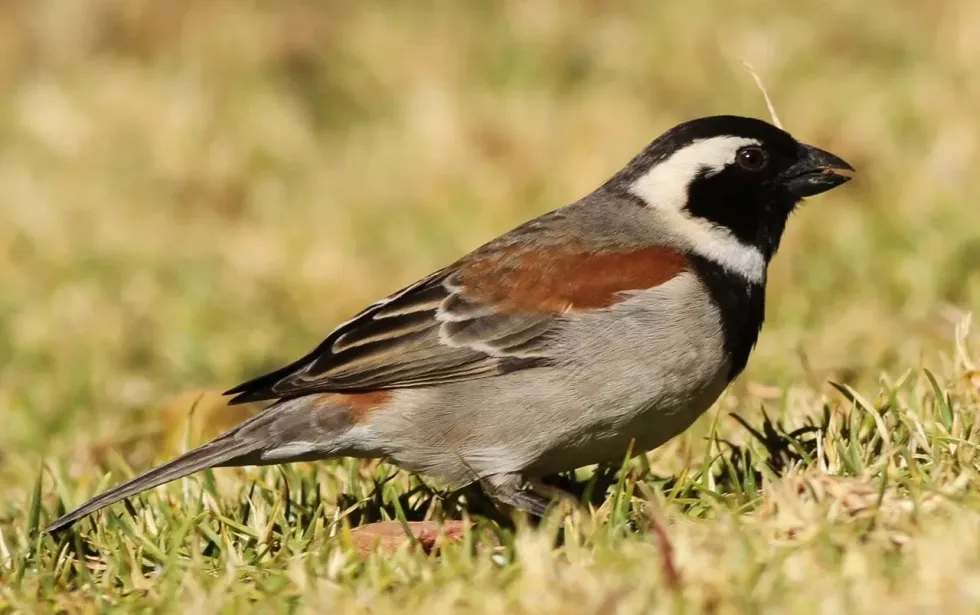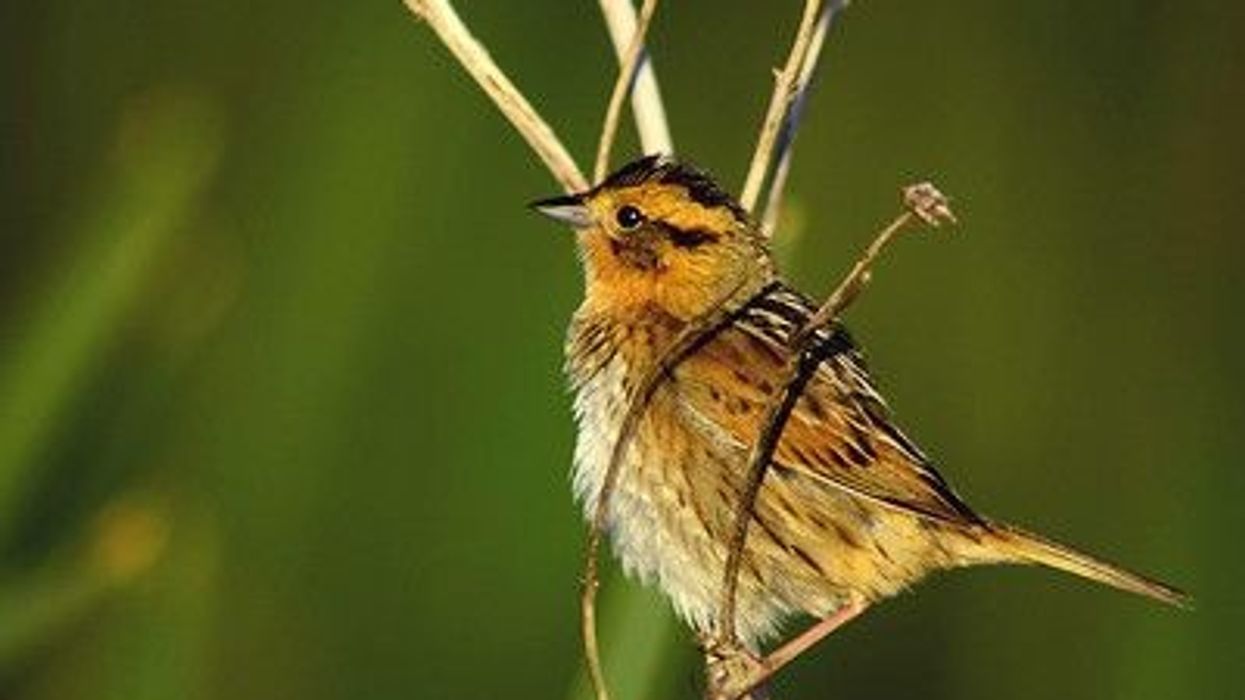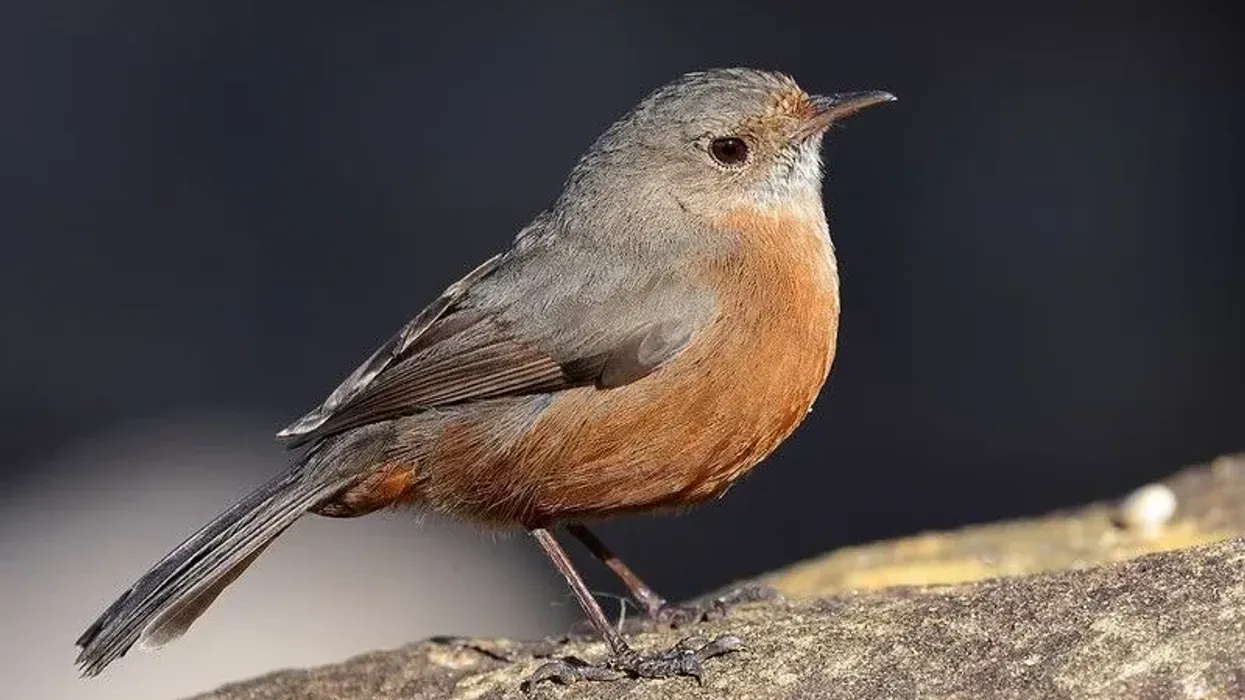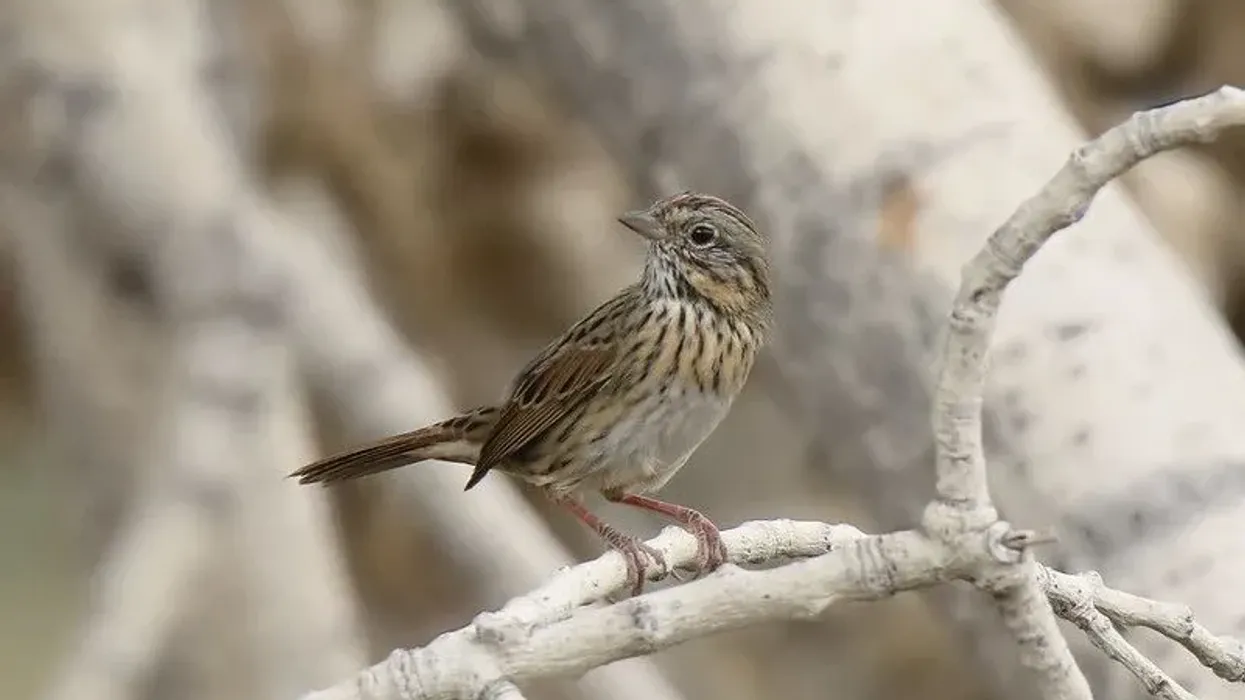Do you like sparrow birds such as the chipping sparrow? If you do, then you're sure to like this article as it contains all the information on the Cape sparrow.
The Cape sparrow (Passer melanurus) is a passerine bird species that belongs to the family Passeridae. They are native to countries in southern Africa.
They are known as gewone mossie in Africa. They can be found in semi-arid habitats and live in flocks of 200 birds during the non-breeding season and in flocks of 50 to 100 pairs of birds during the breeding season.
They can be spotted by their black head and the c-shaped white patch on their head that starts from their eyes and extends to the throat's lower sides and to the back at the nape. Females of the species are duller than males.
Their food consists of plant materials, like the seeds of grass and tree shoots, buds, nectar, and more. No conservation actions are being undertaken for the species as they are a pretty common sight.
Read on to know more about the Cape sparrow and if you like this article, then also check out the seaside sparrow and the Java sparrow.
Cape Sparrow Interesting Facts
What type of animal is a Cape sparrow?
Cape sparrow (Passer melanurus) is a species of sparrow bird.
What class of animal does a Cape sparrow belong to?
The Passer melanurus (Cape sparrow) bird belongs to the family Passeridae and class Aves of animals.
How many Cape sparrows are there in the world?
The population of this bird species as an exact number is not known. However, they are reported as a pretty common species within their natural habitat range. Their population trend in their natural habitat range has also been reported as stable for now.
Where does a Cape sparrow live?
The Cape sparrow bird is near-endemic to South African countries. There are three subspecies under the Cape sparrow species.
Their geographic range is divided according to these subspecies. Passer melanurus vicinus is mainly found in Lesotho, eastern South Africa, and somewhat rarely in western Swaziland.
Passer melanurus melanurus is native to southwestern South Africa, while Passer melanurus damarensis live in northern parts of South Africa northwards to Botswana, southwestern Angola, southwestern Zimbabwe, and Namibia, and potentially even in the extreme southwestern part of Mozambique.
What is a Cape sparrow's habitat?
The primary habitat of this bird is a semi-arid region. These can occur in places such as woodlands or savannah with light trees. They can be seen in greater numbers in habitats like urban areas and cultivated lands. They always stay close to a water source and are non-migratory birds.
Who do Cape sparrow live with?
Cape sparrows are social birds. They can be seen in flocks of up to 200 birds when foraging in non-breeding seasons. They can be seen in flocks of 50-100 pairs, forming loose colonies during the breeding season.
How long does a Cape sparrow live?
The exact lifespan of this sparrow bird is not known. However, sparrows, in general, live for about three years on average in the wild. We can assume the lifespan of these sparrows is close to that length as well.
How do they reproduce?
The breeding season of the Cape sparrow bird species depends upon the influx of food and the rainy season, but mainly it occurs around October to February. These birds are monogamous, meaning, the male and female mate for life.
Birds make up colonies during this time and flocks of about 20 to 50 birds come together and start their courtship display. All the birds hold their heads up, touch the ground with their tails, and hop at irregular intervals while moving ahead.
Some birds might fly up and hover over other birds at around 11.8-23.6 in (30-60 cm) above the ground. This goes on for one to four minutes.
After copulation, the female of this species lays about two to six eggs, while other sparrows like the chipping sparrow lay two to seven eggs. The eggs are then incubated for 12 to 14 days after hatching.
Both the male and female feed their chicks after the eggs have finished hatching. The chicks stay in the nest until they are about 16 to 17 days old.
What is their conservation status?
The conservation status of Passer melanurus (Cape sparrow), according to the International Union for Conservation of Nature, is listed as Least Concern. They don't have any great threats to their population within their natural habitat range, so no conservation actions are being undertaken or planned.
Cape Sparrow Fun Facts
What do Cape sparrows look like?
The Cape sparrow (Passer melanurus) bird is a medium-sized bird. Male birds have a black head and black upper breast.
You can easily spot them by looking out for a c-shaped white band on their black head. It starts from their eyes and continues to their throat's lower side, extending to the back at the nape. The bird's upper parts including their upper wing-coverts and scapulars are chestnut colored, while their back is brown colored.
The base of the primary-coverts has a white patch. The greater-coverts are finely tipped with a buffy color.
The median-coverts have white tips and the upper wing is mainly dark brown colored with buffy colored margins. Their tail is dark brown colored with pale edges.
The undertail-coverts are white and the upper tail-coverts are gray. Their belly is white, while their sides and underpants are grayish. Their legs are brownish-black and their eyes are brown.
Their bill is horn colored and becomes black during the breeding season. The male and the female birds look the same except the female birds are slightly duller in color than the male birds.

How cute are they?
This little bird can be pretty cute. They are highly territorial and can become aggressive if they feel threatened. Hence, we recommend you admire their cuteness from a distance.
How do they communicate?
The common call of the sparrows, 'churr', can be heard from this species when they feel threatened. Their flight call sounds like 'chui'. A distinctive call comes from the male birds.
They make a sound like a loud 'twilleeng' or 'tweeng'. This becomes a repetitive song with jerks. It sounds something like 'chu chup chiju chip choop chollop chlip chop chrreep'.
How big is a Cape sparrow?
An adult Cape sparrow is about 5.5-6.3 in (14-16 cm) in length. They are slightly smaller than fox sparrows, which are about 6-7.5 in (15-19 cm) in length.
How fast can a Cape sparrow fly?
African sparrows, like these Cape sparrows, golden sparrows, and more, can fly at a speed of 21 mph (34 kph).
How much does a Cape sparrow weigh?
These are medium-sized birds. An adult Cape sparrow weighs about 0.6-1.3 oz (17-38 g) on average.
What are the male and female names of the species?
The male of this species is called a cock and the female of this species is called a hen.
What would you call a baby Cape sparrow?
A baby Cape sparrow is called a chick or hatchling.
What do they eat?
These birds are omnivorous in nature. They primarily feed on nectar, buds, shoots, seeds, specifically seeds of cultivated cereals and grass, grapes, and other cultivated fruits. They also feed on insects, like butterflies, moths, and caterpillars.
Are they dangerous?
Cape sparrows are not dangerous in a conventional manner. However, they can be pretty aggressive when defending their territories.
Would they make a good pet?
They are not suitable as pets as they are wild animals.
Did you know...
If you want to get rid of Cape sparrows, try to remove materials from your household that can be used for nests. Use repellent gels to prevent them from perching and clean the surroundings regularly.
Both the male and the female build the nest. The nest is usually dome-shaped and the nest is usually made with small twigs and dry coarse grass stems.
The nest is then lined with soft plant materials and feathers. Nests are made on thorny trees, pylon, and telegraph poles. Nests can also be seen on covered sites, buildings, or in holes in earth banks.
How many eggs do Cape sparrows lay?
The female Cape sparrow lays about two to six eggs in a clutch on average. These eggs are usually greenish or white colored with dark colored marks on them.
What animals eat Cape sparrows?
Usually medium to large sized mammals, like cats and large birds such as hawks, are the predators of all species of sparrow birds.
Here at Kidadl, we have carefully created lots of interesting family-friendly animal facts for everyone to discover! Learn more about some other birds from our Timneh parrot fun facts or crested kingfisher surprising facts pages.
You can even occupy yourself at home by coloring in one of our free printable bird wearing clothes coloring pages.









